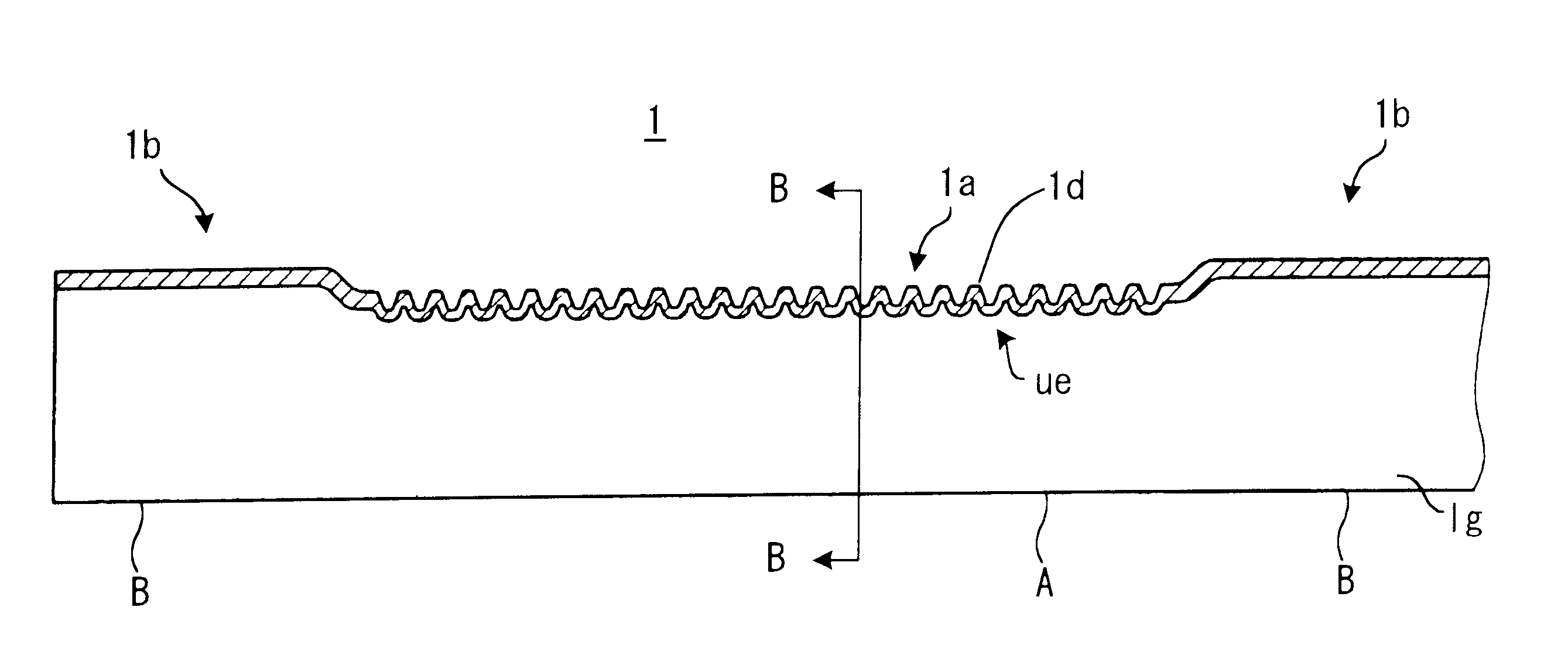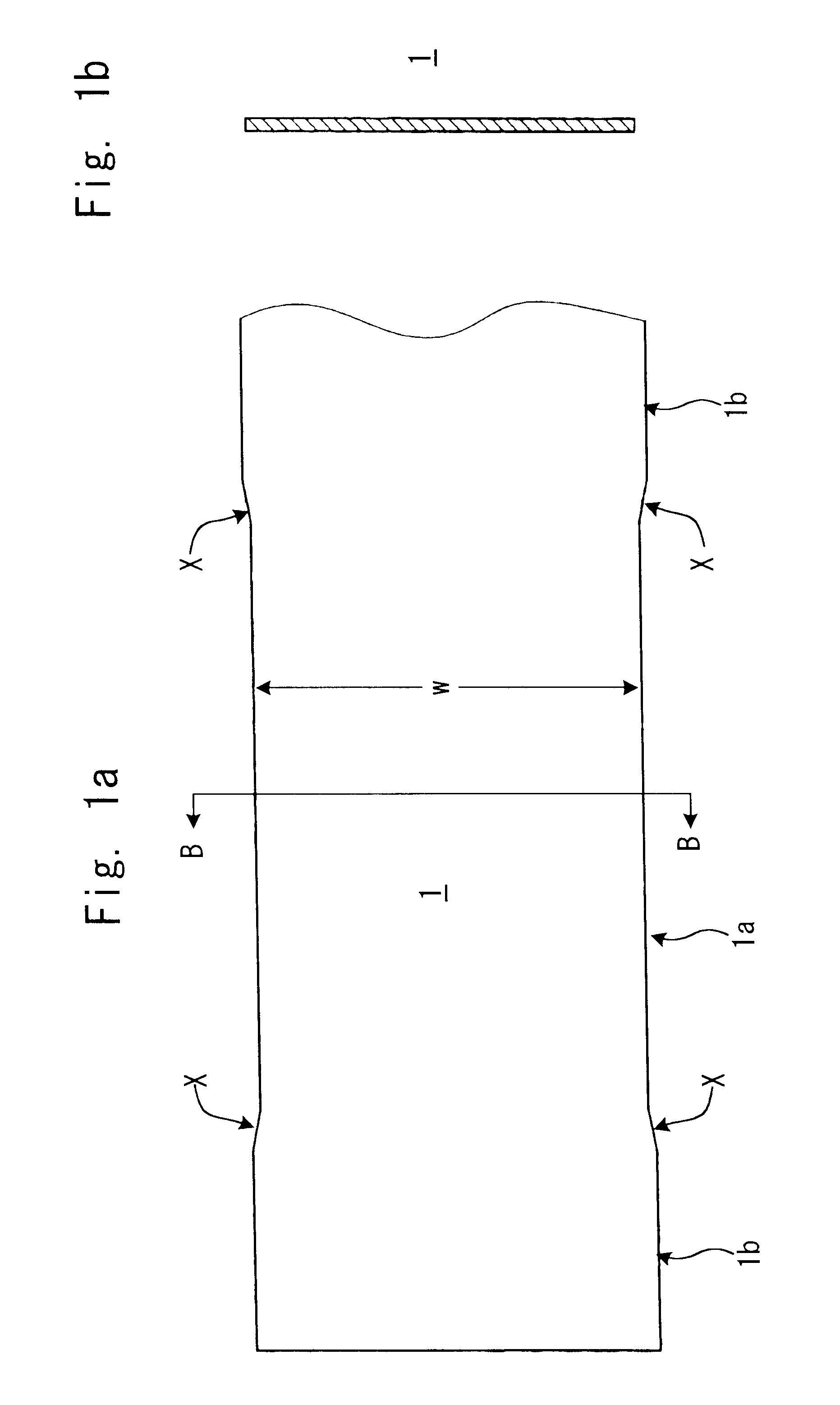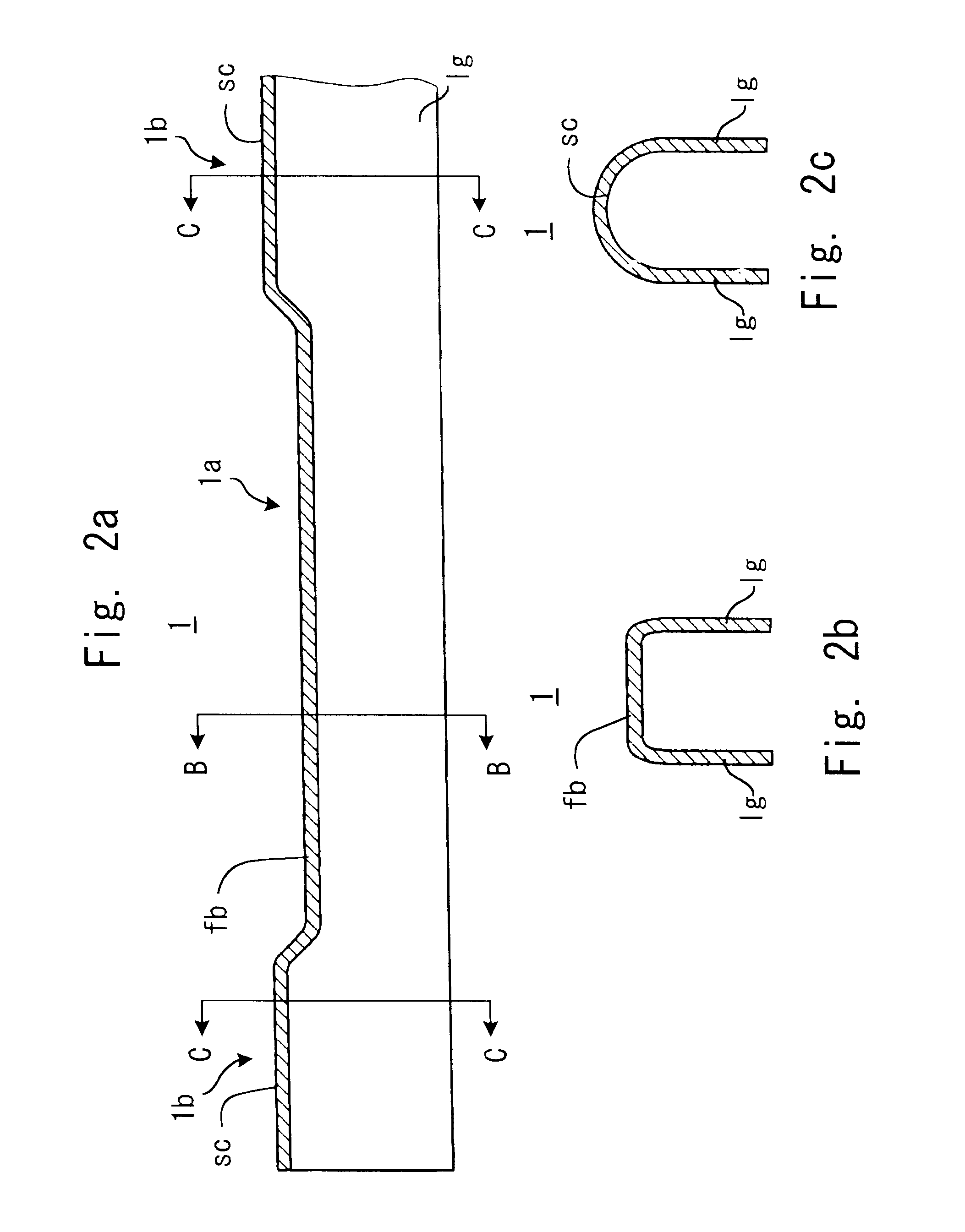Hollow rack shaft
a rack shaft and hollow technology, applied in the direction of hoisting equipment, gearing, transportation and packaging, etc., can solve the problems of unnecessarily thick thickness, low strength of the rack teeth, and insufficient lightness of the rack sha
- Summary
- Abstract
- Description
- Claims
- Application Information
AI Technical Summary
Benefits of technology
Problems solved by technology
Method used
Image
Examples
second embodiment
FIG. 10 is a perspective view for describing in a simple manner the method for manufacturing a hollow rack shaft utilizing plural work pieces. In the first process, an upper gutter-like work piece 22 with rack teeth to comprise upper half (rack teeth side) of the hollow rack shaft is formed from a solid cuboid work piece 21 or a plate work piece. The gutter-shaped work piece 22 is essentially the same as that of the first embodiment except for the difference of the leg length. The lower die approaches from between the two open legs, and as related above, the unevenness ue are formed on the surface IS on the back of the rack teeth row. In the second process of this embodiment, a semicircular lower gutter-like work piece 23 formed from cuboid work piece 21 or a plate work piece, is welded to the upper gutter-like work piece 22. The welded section and both ends are then finished by grinding.
In this embodiment, the two gutter-shaped work pieces are welded at approximately symmetric posi...
third embodiment
FIG. 11 is a perspective view for showing in a simple manner another method for manufacturing a hollow rack shaft utilizing plural work pieces. A four-cornered hollow rack shaft is shown because a circular shape is not always required for both ends of the hollow rack shaft. In the first process, an upper gutter-like work piece 22 with rack teeth to comprise the upper half (rack teeth side) of the hollow rack shaft is formed from a solid cuboid work piece 21 or a plate workpiece. The gutter-like work piece 22 is essentially the same as that of the first embodiment and the gutter-like work piece of the second embodiment except for the difference of the leg length, and as previously described, the lower die approaches through between the two open legs, and the unevenness ue are formed on the surface IS on the back of the rack teeth row. In the second process of this embodiment, a separately prepared lower plate piece 24 is welded to the gutter-like work piece 22. The welded section and...
PUM
 Login to View More
Login to View More Abstract
Description
Claims
Application Information
 Login to View More
Login to View More - R&D
- Intellectual Property
- Life Sciences
- Materials
- Tech Scout
- Unparalleled Data Quality
- Higher Quality Content
- 60% Fewer Hallucinations
Browse by: Latest US Patents, China's latest patents, Technical Efficacy Thesaurus, Application Domain, Technology Topic, Popular Technical Reports.
© 2025 PatSnap. All rights reserved.Legal|Privacy policy|Modern Slavery Act Transparency Statement|Sitemap|About US| Contact US: help@patsnap.com



